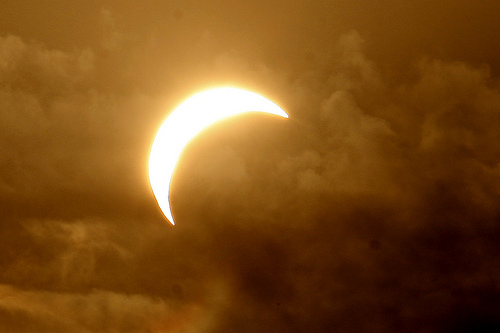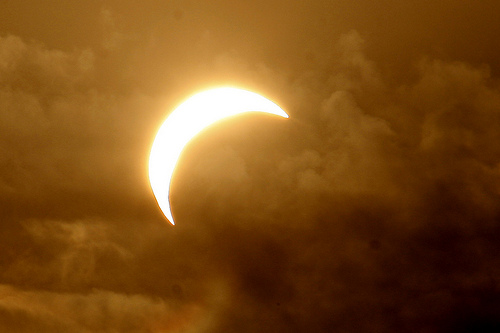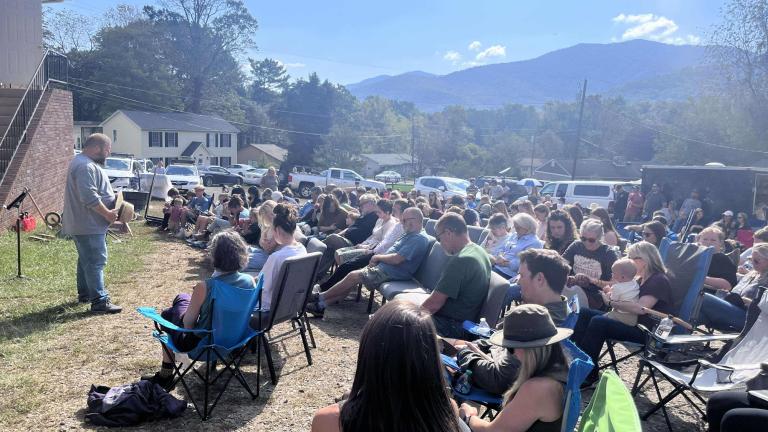 It’s dark days for some solar projects.Photo: Santosh ChandranAs we entered the last month of 2010, the prospects for generating thousands of megawatts of electricity from solar power plants in the California desert looked bright. State and federal regulators green-lighted nine massive green energy projects.
It’s dark days for some solar projects.Photo: Santosh ChandranAs we entered the last month of 2010, the prospects for generating thousands of megawatts of electricity from solar power plants in the California desert looked bright. State and federal regulators green-lighted nine massive green energy projects.
Now the rubber is hitting the road. The K Road, in the case of Tessera Solar’s 663.5 megawatt Calico solar dish project. A week after utility Southern California Edison abruptly canceled a five-year-old contract to buy electricity from Calico, Tessera has sold the project to a little-known company called K Road Power.
The fire sale — terms of the deal were not disclosed — came as Tessera struggled to raise money to finance $4.6 billion in construction costs for Calico in the Mojave Desert and its 709-megawatt Imperial Valley solar power plant near the Mexican border.
Tessera’s abandonment of one of the United States’ biggest solar projects is a setback for efforts to meet California’s mandate to obtain a third of its electricity from renewable sources by 2020. It underscores the shakeout sure to come as developers with approved solar projects face the reality of securing billions of dollars to build them with technology untested on a commercial scale.
Tessera had planned to deploy 26,540 of its SunCatcher Stirling solar dishes on some 4,000 acres of government-owned desert land. Each SunCatcher is 40 feet tall and 38 feet wide and resembles a giant mirrored satellite receiver. The mirrors focus the sun on a hydrogen gas-filled Stirling engine suspended over the center of the dish. As the gas heats up and expands, it drives pistons that generate electricity.
Now K Road, led by a New York energy developer and dealmaker named William V. Kriegel, says it will replace the solar dishes with 750-megawatts’ worth of tried-and-true photovoltaic panels and later will add SunCatchers to generate 100 megawatts.
But that is a much larger footprint than what the California Energy Commission licensed. The company will have to secure approval from the agency as well as from the U.S. Bureau of Land Management for the reconfigured Calico project, which had drawn fire from environmental groups for its impact on protected wildlife.
(The day the energy commission licensed Calico, environmentalists told commissioners they were considering suing to stop it. And on Monday, a Native American group filed a lawsuit in federal court in San Diego alleging that the Interior Department did not properly consider the environmental and cultural impact of Calico and five other big solar projects.)
A spokesperson for the energy commission, Sandy Louey, told me in an e-mail that K Road must file an amendment to the Calico license and certify that it will comply with the restrictions in the existing license. It seems unlikely the energy commission would just rubber-stamp K Road’s plans for a much larger project using different technology that would have different environmental impacts.
The BLM, meanwhile, usually wants developers to have a power purchase agreement in place before they lease federal land, as a way to weed out solar speculators. K Road at the moment has no buyer for the electricity that would be generated by Calico.
In other words, it’s back to the solar drawing board.



